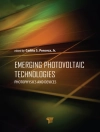A lab-on-a-chip device is a microscale laboratory on a credit-card sized glass or plastic chip with a network of microchannels, electrodes, sensors and electronic circuits. These labs on a chip can duplicate the specialized functions as performed by their room-sized counterparts, such as clinical diagnoses, PCR and electrophoretic separation. The advantages of these labs on a chip include significant reduction in the amounts of samples and reagents, very short reaction and analysis time, high throughput and portability. Generally, a lab-on-a-chip device must perform a number of microfluidic functions: pumping, mixing, thermal cycling/incubating, dispensing, and separating. Precise manipulation of these microfluidic processes is key to the operation and performance of labs on a chip. The objective of this book is to provide a fundamental understanding of the interfacial electrokinetic phenomena in several key microfluidic processes, and to show how these phenomena can be utilised to control the microfluidic processes. For this purpose, this book emphasises the theoretical modelling and the numerical simulation of these electrokinetic phenomena in microfluidics. However, experimental studies of the electrokinetic microfluidic processes are also highlighted in sufficient detail. – The first book which systematically reviews electrokinetic microfluidics processes for lab-on-a chip applications- Covers modelling and numerical simulation of the electrokinetic microfluidics processes- Providing information on experimental studies and details of experimental techniques, which are essential for those who are new to this field
Dongqing Li
Electrokinetics in Microfluidics [PDF ebook]
Electrokinetics in Microfluidics [PDF ebook]
购买此电子书可免费获赠一本!
语言 英语 ● 格式 PDF ● ISBN 9780080530741 ● 出版者 Elsevier Science ● 发布时间 2004 ● 下载 6 时 ● 货币 EUR ● ID 2261239 ● 复制保护 Adobe DRM
需要具备DRM功能的电子书阅读器












